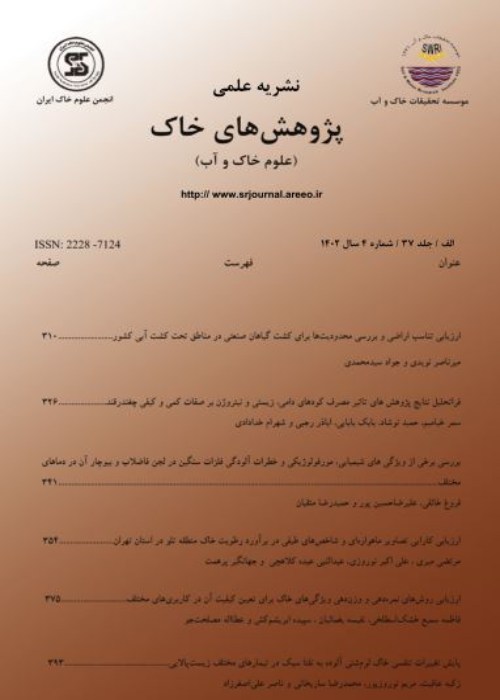Increasing the Efficiency of Rock Phosphate by some Indigenous Microorganisms of Pistachio Orchards to Improve Growth and Nutrition of Pistachio Seedlings under Salt Stress
Author(s):
Abstract:
Conversion of rock phosphate to phosphorus fertilizers is expensive and their consumption can increase the risk of soil pollution via accumulation of heavy metals like cadmium. Increasing p availability of rock phosphate is important in plant P nutrition. In this research, potential use of phosphate solubilizing and Thiobacillus bacteria were studied for increasing rock phosphate efficiency and pistachio seedling growth. The greenhouse experiment was factorial with five bacterial and three salinity levels as completely randomized design with four replications. Inoculation treatments included a control without fertilizer and inoculation (T1), rock phosphate (T2), rock phosphate with two phosphate solubilizing strains contain pantoea dispersa and p. thivervalensis (T3), rock phosphate with sulfur and three Tiobacilluce isolates (T4), and rock phosphate with sulfur, two phosphate solubilizing strains and three Tiobacilluce isolates (T5). Also, three salinity levels including S0, S1, and S2, respectively, 3, 8, and 16 dS/m were applied.Increasing salinity significantly reduced wet and dry weights of shoot and root, average height and number of leaves per seedling, total uptake of P and Fe, had no significant effect on P concentration and Zn uptake. Bacterial treatment had significant effect on wet and dry weight of shoot and root, average height and number of leaves per seedling, P and Fe concentrations, and total uptake of P, Fe, and Zn. Use of phosphate solubilizing bacteria with rock phosphate had the highest effect on wet and dry weights of shoot and root, average height and number of leaves per seedling, and increased them by, respectively, 36.1%, 37.8%, 11.5%, and 27.1 per cent compared with the control. Combination of sulfur oxidizing bacteria with sulfur and rock phosphate (T4), and also combination of phosphate solubilizing and sulfur oxidizing bacteria with sulfur and rock phosphate (T5), had the highest effect on phosphorus concentration and uptake. The T4 treatment in case of P concentration and uptake and the T5 in case of P uptake had significant difference with the control in all salinity levels. However, application of rock phosphate increased P concentration and uptake, but the effect was significantly less than bacterial treatment.
Keywords:
Language:
Persian
Published:
Iranian Journal of Soil Research, Volume:29 Issue: 3, 2016
Pages:
371 to 381
magiran.com/p1481403
دانلود و مطالعه متن این مقاله با یکی از روشهای زیر امکان پذیر است:
اشتراک شخصی
با عضویت و پرداخت آنلاین حق اشتراک یکساله به مبلغ 1,390,000ريال میتوانید 70 عنوان مطلب دانلود کنید!
اشتراک سازمانی
به کتابخانه دانشگاه یا محل کار خود پیشنهاد کنید تا اشتراک سازمانی این پایگاه را برای دسترسی نامحدود همه کاربران به متن مطالب تهیه نمایند!
توجه!
- حق عضویت دریافتی صرف حمایت از نشریات عضو و نگهداری، تکمیل و توسعه مگیران میشود.
- پرداخت حق اشتراک و دانلود مقالات اجازه بازنشر آن در سایر رسانههای چاپی و دیجیتال را به کاربر نمیدهد.
In order to view content subscription is required
Personal subscription
Subscribe magiran.com for 70 € euros via PayPal and download 70 articles during a year.
Organization subscription
Please contact us to subscribe your university or library for unlimited access!


